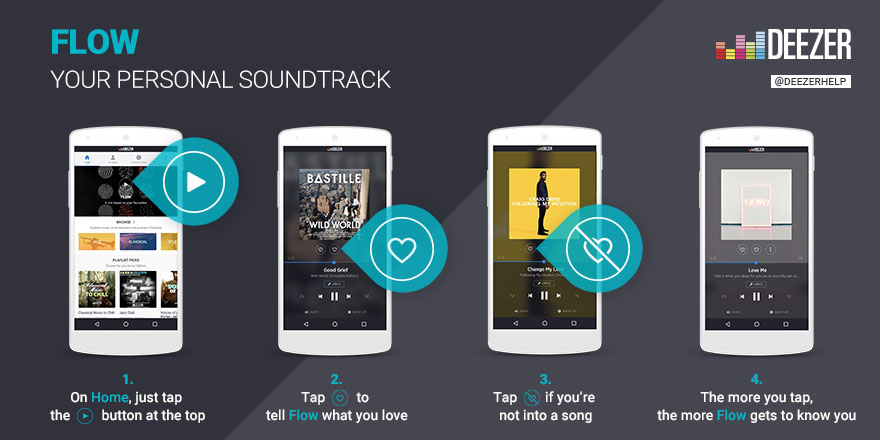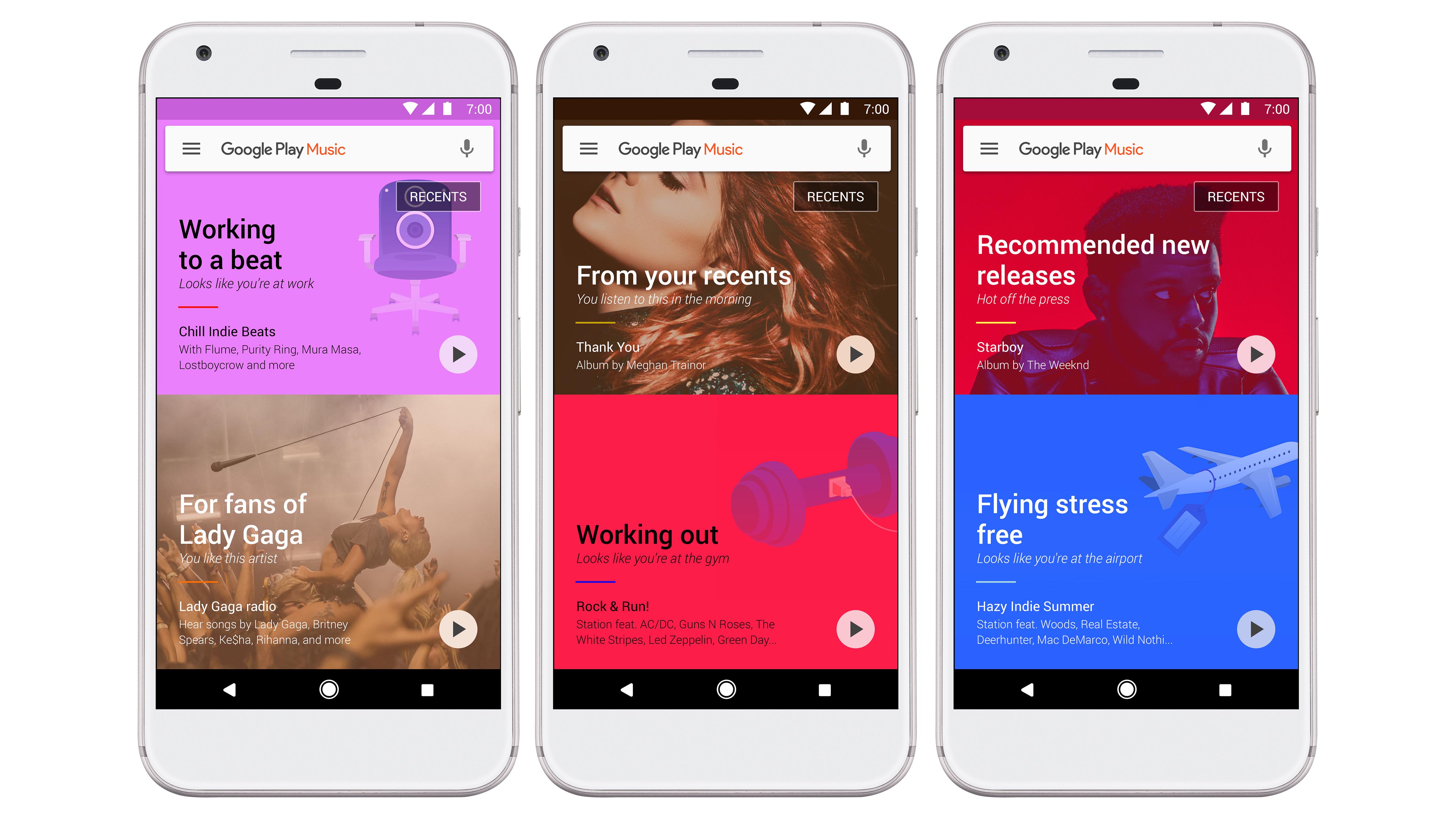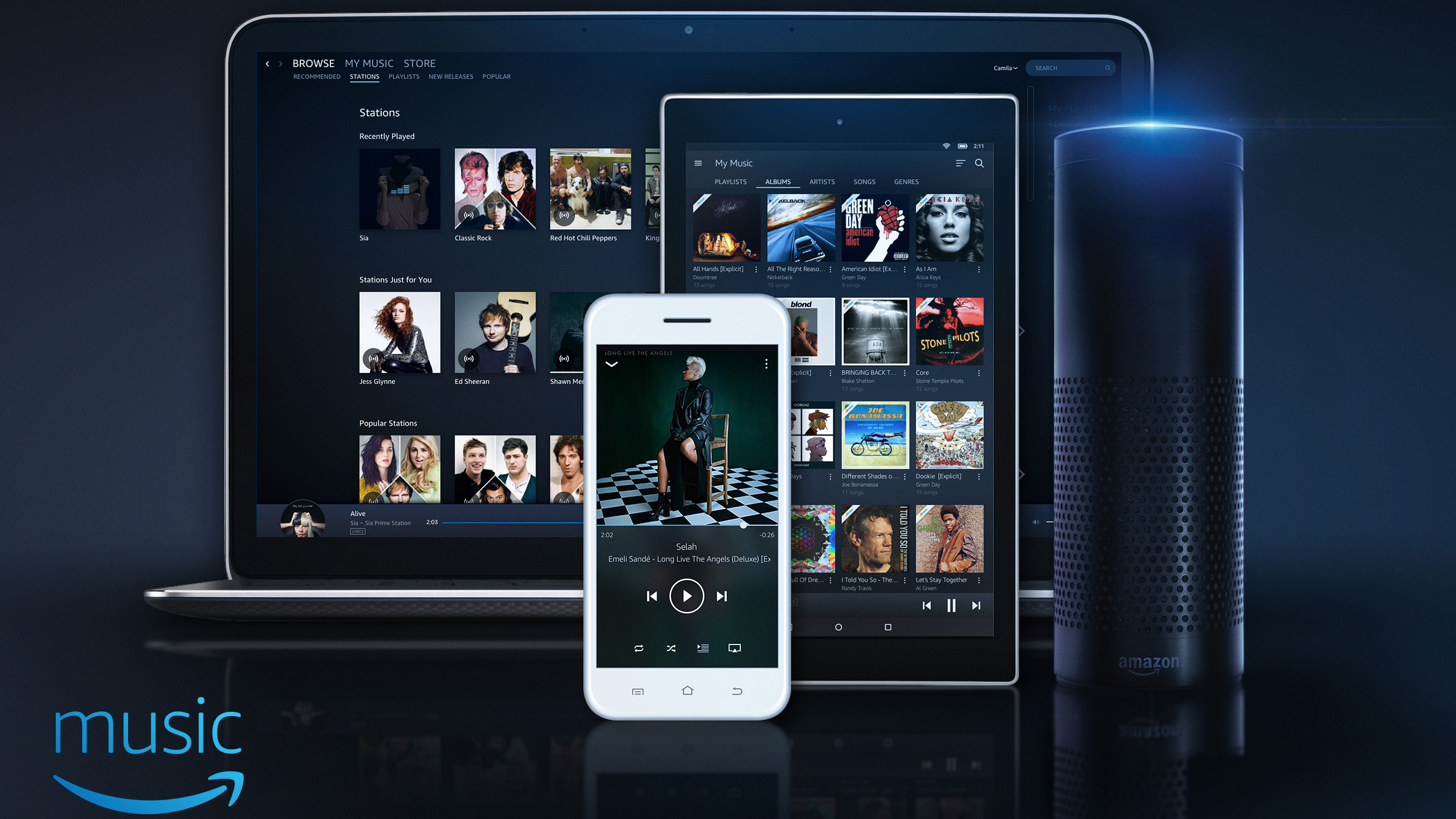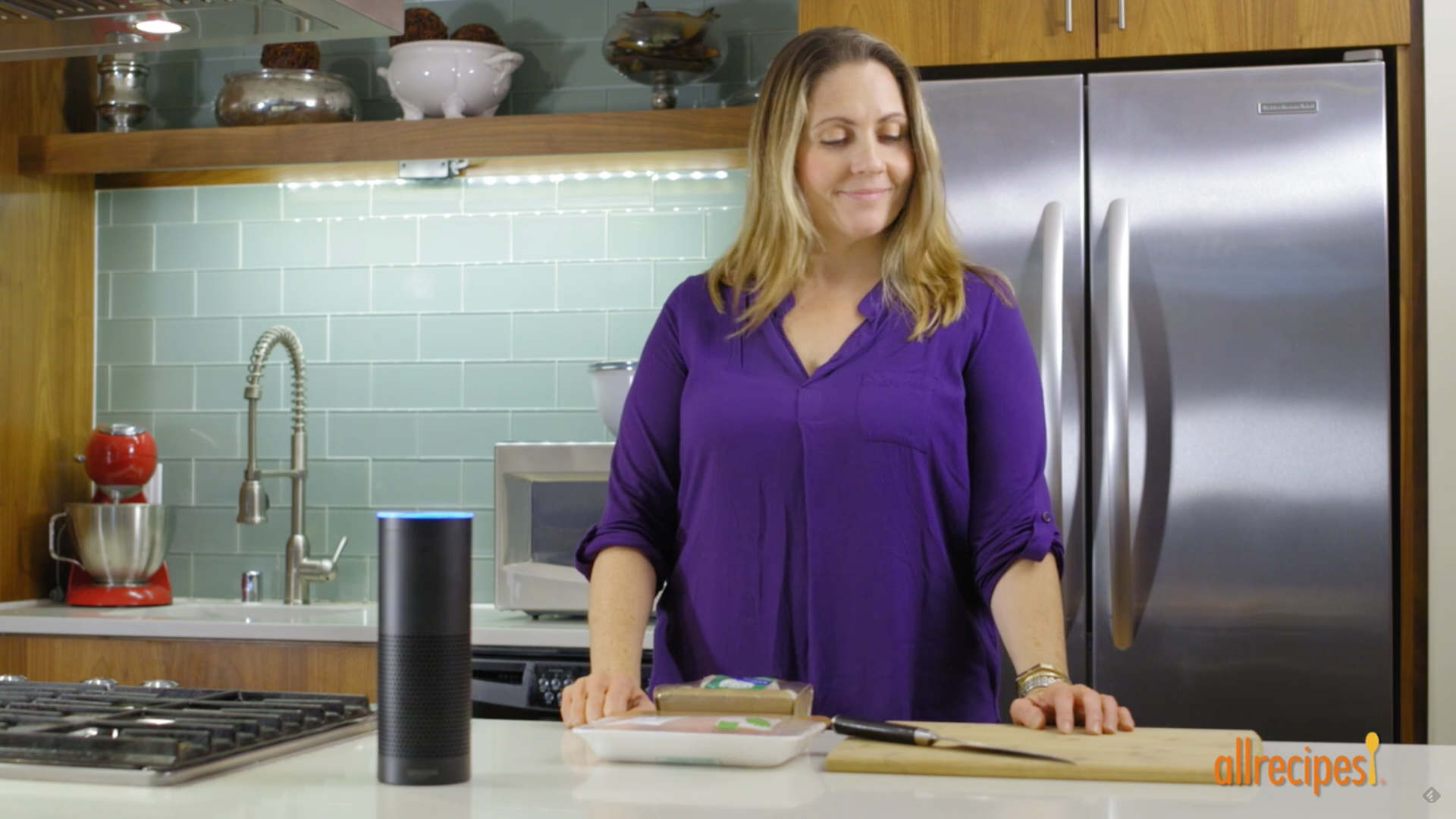How the music streaming giants are helping you find your next favorite song
The way music sites choose the music you want to listen to

40 million tracks. It’s a massive, incomprehensible number of songs but that’s the figure music-streaming sites have used in recent times to legitimise their services. Hit the 40 million mark and this somehow proves to potential music listeners that because they have such an unequivocal amount of music on offer they are the ultimate service.
The problem is: if you are given too much choice, no matter how big of a music fan you are, it’s likely you’ll retreat back into your nostalgia cave and put on a record that you are familiar with.
That’s where algorithms come in. They ease users into new music, taking the hassle of finding new stuff away. They make this whole ‘music choosing’ thing easy, even if the technology underneath this apparent simplicity is a complicated beast.
Some services have bought in this knowledge to make sure they are serving up the best music. For instance, Spotify acquired music intelligence platform Echo Nest back in 2014 and it’s this technology that underpins its fantastically personal Discover Weekly and Release Radar playlists.
Apple has taken a different approach with its recommendations. Using its power it's collaborated with numerous musical heavyweights to curate playlists and host radio shows on Beats 1 for Apple Music.
Others use a mixture of humans and computers, weaving knowledge and machine learning into a taste-making tapestry.
Feel Flows
One such company is Deezer. Originally founded in France in 2007, the music-streaming service now boasts (naturally) 43 million tracks and has rapidly expanded to offering music to 6 million paying customers.
Sign up for breaking news, reviews, opinion, top tech deals, and more.
Getting into streaming early has meant that it’s been buoyed by the presence of Spotify, Google, Apple and Amazon in the streaming market - more rivals has the positive effect of raising music-streaming awareness - but it still needs a USP and the things it holds dear are how simple the service is to use and its tagline: Sounds Like You.

“The first age of streaming service, we all had the same mission to access all the music we wanted. Now we have reached that, the next challenge is to find the right song for you,” says Julie Knibbe, Head of Product Strategy at Deezer.
“All services have the same promise, but you need to show the right music at the right time and we choose the simplest way to do this.”
That simple way is something called Flow. Released in 2013, it’s a one-click button users can press when they just want to listen to music and not choose what to listen to.
“The logic was that most people are in a hurry, so they don’t have time to choose music. So, we just put a simple play button on the service. It was unique and we put a lot of emphasis on it.”
Behind the simplicity is actually a lot of science. To make sure Flow and other personalised playlists on the service worked, Deezer had to find the right blend of algorithm and people power.
All services have the same promise, but you need to show the right music at the right time
Julie Knibbe, Deezer
“Algorithms are very important, as they help recommend tracks, cutting through the millions of tracks. We have to use algorithms but we have human programmers that have a choice in how the algorithm works,” explains Knibbe.
“We can choose to favor new artists, popular artists, the tone and rhythm of a track. There are so many combinations that can be done, We can A/B test as well; choose to serve 50% of users more popular stuff and the rest something obscure.
“We have people who measure how well an algorithm is working - it is constantly changing.”
Music: Response
There are some constants with how the algorithm works: it favors both the user of the service and the music tastes of Deezer’s curators.
In total, Deezer uses a team of 50 curators. They are specialised by genres and will have specific country knowledge as well. For example, in Brazil, half of the music streamed is local music, something a Deezer curator will take into account when developing playlists. This is then coupled with user behaviour.

“If we recommend a track and everyone skips it we know something is wrong with it,” says Knibbe.
“We also know that new music discovery is not a daily habit. So to help users discover music a bit more often we have to balance mixing songs from a user’s own library with newly discovered songs. We find that having this blend makes you find more music you like.
“The goal is making it easier, offering up new tracks but also what people like. Having that balance makes sure people rediscover things they love but also learn what’s new.”

Another way to offer up music is through context. We have seen small steps in this area with Spotify’s Workout playlists. The music-streaming giant told TechRadar way back in 2014 that it was looking to contextualise how it serves music, with Spotify’s Donovan Sung noting: "The more we know about you, the better the engine can be. Maybe with motion sensors in phones, we can start guessing things like 'are you running, biking or driving?'”.
Two years on and Spotify hasn’t quite dug that deep into contextualisation, but another streaming site has.
The more we know about you, the better the engine can be
Donovan Sung, Spotify
Google announced recently that it was upping its algorithm game and made its playlists that little bit more self aware. Plugging into the same contextual tools that power Google Now, it has remixed and remastered its streaming service to offer richer music recommendations based on what you are doing and where you are.
Using GPS and other data it will recognise if you are near the gym and get a blood-pumping playlist ready for you. And if you are about to get on a plane, Google Play Music will recommend a calming playlist for those who are worried about flying.

“When you opt in, we’ll deliver personalized music based on where you are and why you are listening - relaxing at home, powering through at work, commuting, flying, exploring new cities, heading out on the town, and everything in between,” explains Elias Roman, Lead Product Manager of Google Play Music.
Talk Talk
Context is very much key, then, when it comes to the future of music recommendation. But what happens when you take your phone out of the equation completely? When UX is all about speaking to a device and not actually looking at a screen?
This is what Amazon has been learning to master for the past two years - and we are finally seeing the fruits of this, thanks to its smart speaker Amazon Echo, its voice assistant Alexa and Amazon Music Unlimited, its new premium music service.

“The way people want to find music through Alexa is how you would speak to someone else about music. And that’s very different from how you search for music through a search button on a streaming service - people speak very naturally about music,” says Paul Firth, Amazon’s head of Digital Music.
“I used to work in a record shop and you would get someone everyday coming in asking for a record by reciting the lyrics. So, we have enabled Alexa to do just that.”
As well as using voice to push its music service, Amazon has also added in another metric - mood. You can now ask for playlists that match how you are feeling, something that adds more complexity to the algorithm mix.
“If you ask Alexa to play 'sad indie music' from the ‘90s, it’s not playing a playlist you will listen to, it is building a list on the fly based on the three things you ask for,” explains Firth.
Music streaming was too complicated - we are now making it really easy for them
Paul Firth, Amazon
In this case, those three things are: genre (indie), release date ('90s) and mood (sad).
Every music streaming service uses genre, so that’s straightforward but asking for the year is more complex. Getting the decade right is a little bit harder as so many albums get re-released now so you have to know the original release date. That’s a tougher metadata problem Amazon had to work out. And then there’s mood, which a wholly different challenge.

“Initially we used our team of music experts,” notes Firth. “Using the team in the UK and in other countries we tagged every song in the catalogue with a mood. We had to do the first 5,000 manually then machine learning took over and did the rest of the 40 million tracks. Now everything in the catalogue has got a mood attached to it.
“That means that you can build these playlists from nothing with this combination.
“It’s this that we think will help grow the streaming market. People who have thought about music streaming before may have thought it too complicated, we are now making it really easy for them.”
Easy listening
For all music services, it boils down to simplicity. Whether it’s the one-button approach from Deezer, the contextualised approach Spotify is hinting at and Google Music is providing or Amazon finding its voice.
Getting music, whether new or old, to users in the quickest, easiest way is at the heart of most of these service, something that’s served both by technology and people, and the future of streaming will see a refinement of this.

“I think the next challenge is making those recommendations better and better, we need to improve how natural the interaction is with the user," says Deezer’s Julie Knibbe.
“We are asking for explicit feedback and taking in more real-time feedback and context. And leveraging things like voice, is key.
"Streaming is happening on many devices and not just on mobile - we see more and more use outside mobile within home and in speakers, more and more interacting in a natural way. The future is providing the right service on the right platform anytime.”
“While smartphones undoubtedly drove the first spate of music growth and music streaming, we think that putting music back into the center of the home will drive the next phase,” says Amazon’s Paul Firth.
“Voice control will be a very important part of that.”
- Want a voice-controlled speaker? Then the Amazon Echo is for you

Marc Chacksfield is the Editor In Chief, Shortlist.com at DC Thomson. He started out life as a movie writer for numerous (now defunct) magazines and soon found himself online - editing a gaggle of gadget sites, including TechRadar, Digital Camera World and Tom's Guide UK. At Shortlist you'll find him mostly writing about movies and tech, so no change there then.